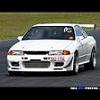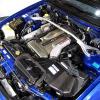Tyre Pressure
Announcements
-
Similar Content
-
Latest Posts
-
Everyone is too used to learning from places like HPA "how to tune" and what to expect at what point, rather than being able to see "The computer says I'm in cell with Row = 8, column =4, and I can see my fuel is lean, so lets add more" Everyone wants "real units", which helps for someone picking it up for the first time and seeing how bad the tune is if they're not used to touching it. However, I think for most of us who want to play with it, you're 100% right, we're only needing to learn about it for OUR CAR. Which makes it great, and we don't need to care what the real values are, we just need to know which cell it is, that's causing the lean or rich point, or that we want more ignition timing or less. But again, everyone wants everything super you beaut and nearly self tuning, with VE maps, and a billion compensations... Though then there's me over here when I'm doing reverse engineering work just reading data in hex format that most people couldn't work anything out from. Yet I can see what's going on.
-
Um. No. Since Matt introduced the TIM it has become a lot easier to deal with the consequences of changing K for AFM and injector swaps. Then, tuning is a f**king doddle. No-one needs to know or care how many grams of air are flowing or any other bullshit. Need more fuel in a cell? Add more fuel. Need more timing in a cell. Add more timing. Need to adjust any of the other tables for warm up and so on? No harder than anything else. Sure - it's not an ECU system for starting from scratch on an arbitrary engine. But then.....it was never supposed to be, not recommended for, and almost never used that way. So.... On your engine, in particular, Nistune/Nissan OEM is about as sophisticated and difficult as banging 2 rocks together. Those ECUs are primitive and simple. There is nothing difficult there. I learnt Nistune from scratch, created new maps with extended axes, interpolated/extrapolated the original maps onto them and tuned my RB20 (basically the same ECU as your 26 ECU) all by myself, more than 20 years ago. And that was long before even TIM.
-





Recommended Posts
Create an account or sign in to comment
You need to be a member in order to leave a comment
Create an account
Sign up for a new account in our community. It's easy!
Register a new accountSign in
Already have an account? Sign in here.
Sign In Now